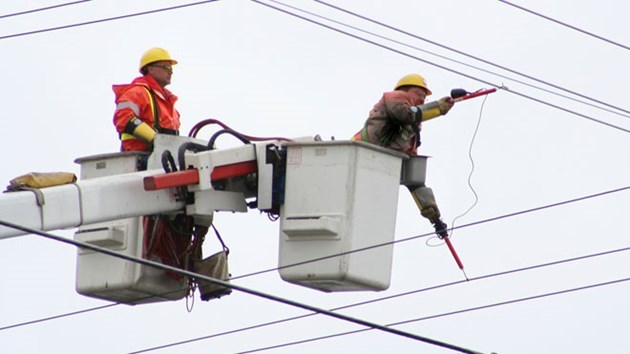While the provincial government has shown no signs of backing down from its plans to sell off 60 per cent of Hydro One, those who oppose the move say they do not intend to give up.
“We're absolutely holding out hope that the Liberal government is going to see that this is a wrong-headed plan for the people of Ontario and halt any further sale of shares,” said Candace Rennick, secretary treasurer of CUPE Ontario.
The Canadian Union of Public Employees has been one of the lead organizations behind the Keep Hydro Public campaign (https://keephydropublic.ca/).
But in November 2015, the province started its divestment of Hydro One shares with an initial public offering that net its coffers more than $5 billion.
The Ontario government raised a total of $1.83 billion from the sale of the first 15 per cent of the utility's shares.
The province gained an additional $2.2 billion from a deferred tax asset benefit and another $1 billion from a special dividend and payments-in-lieu of taxes.
In April, the province sold an additional 15 per cent of Hydro One shares at $23.65 per share for total gross proceeds of approximately $1.7 billion.
The provincial government said the second offering of shares has kept it on track to generate around $9 billion in gross proceeds and other revenue benefits. That would include $4 billion in net revenue gains that will be invested in infrastructure and $5 billion to reduce debt.
The Liberals intend to use the $4 billion in net revenues for infrastructure to help subsidize its plans to invest about $160 billion over 12 years on priority projects such as GO Transit Regional Express Rail, Light Rail Transit projects in communities across Ontario through the Moving Ontario Forward initiative, and natural gas network expansion in rural and northern communities.
But Rennick said that while infrastructure investments are necessary, there are other ways the provincial government could raise the necessary funds – such as increasing corporate tax rates – rather than selling off a public asset.
“(Hydro) rates are already on the rise and we think selling Hydro One will make things even worse,” she said.
Comparing Ontario’s publicly and privately owned local distribution companies in terms of total costs per customer, fully public companies averaged $409 per year compared to fully private companies at $725 per year, the Keep Hydro Public campaign has said.
Rennick said the campaign plans to increase its lobbying efforts and encourages Ontarians to contact their MPPs in opposition to the Hydro One sell-off.
For its part, the province has said it will keep 40 per cent of Hydro One shares and will not allow any buyer to purchase more than 10 per cent of the shares.
On July 12, the province announced an agreement-in-principle with First Nations in Ontario to sell up to 15 million Hydro One shares – or 2.5 per cent of the total current outstanding common shares – to First Nations.
“Meaningful First Nations’ participation in the energy sector is a priority for the province and enables economic development opportunities with First Nation communities across Ontario,” said Energy Minister Glenn Thibeault in a press release at the time. “This new agreement-in-principle is transformational and unprecedented, and reflects the spirit of the political accord in strengthening Ontario’s relationship with First Nations.”
